Linear-leaved sundew (Drosera linearis). Photo courtesy of Dave Czoschke.
The focus of the 2022 Species of the Year is climate change. Warming temperatures, more frequent extreme weather events like flooding and droughts, and the introduction of new invasive species are already affecting our plants and plant communities. While climate change has impacted all of Wisconsin in one way or another, some rare plants are more vulnerable than others. Those found in dry prairies well above the threat of flooding, for example, may be less impacted than plants already at the southern edge of their range and limited to cool, moist microclimates. These plants, the ones most vulnerable to the impacts of climate change, will be our focus this year.
The plants we are focusing on this year fall into two categories: those at the southern edge of their range in Wisconsin and those found in a particularly vulnerable habitat. If you're up for a challenge, reach out to the RPMP program coordinator and request a survey. You can see from the map that they are scattered mainly in the northern and central parts of the state.
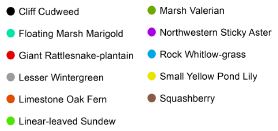
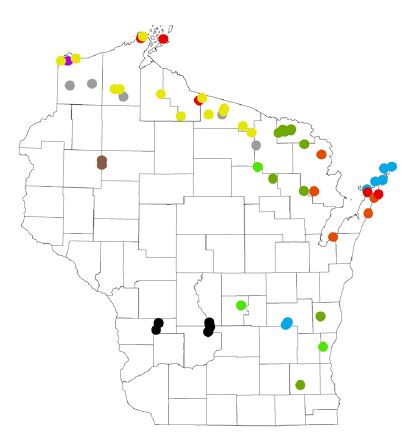
Found In Vulnerable Habitat
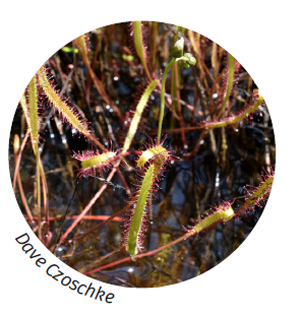
Linear-leaved sundew (Drosera linearis)
Linear-leaved sundew is found in rich fens. These communities have a quaking mat and typical "bog" plants like leatherleaf, bog rosemary and pitcher plants but also plants limited to mineral-rich wetlands like bog buckbean, twig rush and shrubby cinquefoil. These rich fens depend on mineral-rich groundwater, which is likely to be impacted by higher temperatures and increased winter rain. Extreme flood events could also result in increased run-off and nutrient loading, resulting in a influx of invasive species like cattail. There are three priority populations of linear-leaved sundew in Wisconsin.
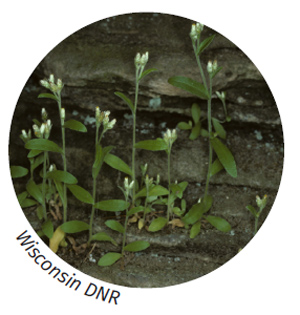
Cliff cudweed (Pseudognaphalium saxicola)
Cliff cudweed is one of two plants endemic to Wisconsin, meaning they are found nowhere else in the world. It can be found on cliffs near the Wisconsin and Kickapoo rivers. Whether moist or dry, these cliffs are exposed to extreme flooding events that have become more frequent, especially along the Kickapoo River, in recent years. Scouring from floods has the potential to wipe the cliffs clean of any vegetation. To make matters worse, as an annual, cliff cudweed doesn't have extensive roots that lodge into cliff crevices and hold it tight to the substrate. There are six priority populations of cliff cudweed in Wisconsin.
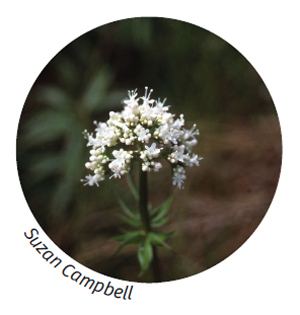
Marsh valerian (Valeriana uliginosa)
Marsh valerian is one of two native valerians in Wisconsin. Both are rare and both are found in calcareous habitats. Marsh valerian, though, is more vulnerable, to the impacts of climate change because it's a more northern species. You can find it in the calcareous wetlands of eastern Wisconsin. Since these habitats depend on consistent inputs of mineral-rich groundwater, anything that could disrupt that such as drought, rain on frozen ground or increased temperatures, has the potential to threaten their integrity. On top of that, extreme flooding events can, at least temporarily, submerge populations, as has been seen recently in northern Wisconsin. There are 12 priority marsh valerian populations in Wisconsin
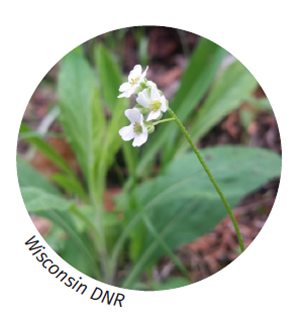
Rock whitlow grass (Draba arabisans)
Although cliff communities are found throughout Wisconsin, rock whitlow grass is restricted to exposures of the Niagara Escarpment in Fond du Lac and Door counties. Some of these sites are shaded and cool, while others are more exposed and dry. The strong fidelity to this unique geologic feature is what makes rock whitlow grass vulnerable to climate change. Besides being geographically restricted, moist, cliffs in particular, are vulnerable to disruptions in groundwater flow, erosion or reductions in overhead canopy, all of which could change the microclimate around the unique flora. There are seven priority populations of rock whitlow grass in Wisconsin.
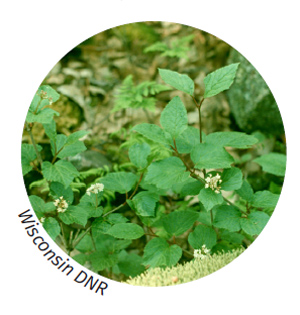
Squashberry (Viburnum edule)
Squashberry is doubly vulnerable in Wisconsin. First, it is a boreal species reaching the southern edge of its range in Wisconsin. Second, it is limited to a very small area in Barron County and within that area is only found in a very particular plant community called a felsenmeer. This community is called a climate relict because the cold air that drains from the base of the rocky slopes provides suitable habitat for species that would have otherwise retreated from Wisconsin with the glaciers. There are two priority populations of squashberry in Wisconsin.
Edge of Range Species
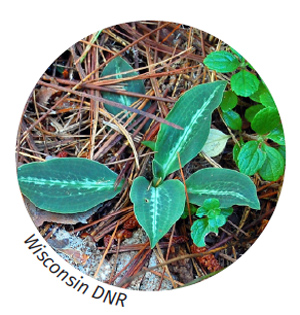
Giant rattlesnake plantain (Goodyera oblongifolia)
Giant rattlesnake plantain is a boreal species found in northern upland forests. Unlike many of our native orchids, it can be identified even if it’s not in flower by its distinctive basal leaves that only have the midrib whitened (all other rattlesnake plantains have a network of white veins on a green background). Giant rattlesnake plantain is scattered across northern Wisconsin, and multiple new populations have been discovered in the last few years. Although the forests this orchid is found in are not rare, they will change as species composition changes and other stressors like forest pests, invasive species and deer browsing increase. There are five priority populations in Wisconsin.
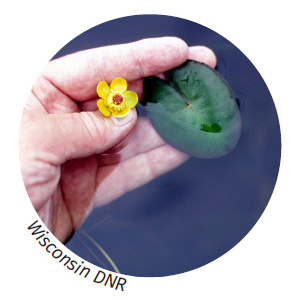
Small yellow pond lily (Nuphar microphylla)
Small yellow pond lily is a boreal species that reaches the southern edge of its range in northern Wisconsin, where it's found in lakes, spring-fed ponds and quiet bays. The impact of climate change on aquatic systems is less clear, and the fact that small yellow pond lily is found in a variety of waterbody types may provide some buffer. Still it's possible warming temperatures will be enough to drive it out of Wisconsin. There are 13 priority populations in Wisconsin.
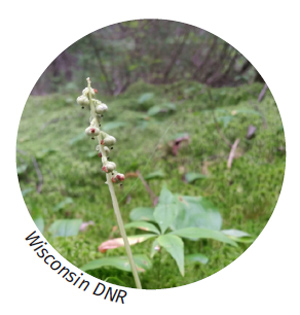
Lesser wintergreen (Pyrola minor)
Lesser wintergreen is a boreal species that extends south to the northern tier of Wisconsin counties. There, it is found in cool, wet cedar swamps. These forests are highly vulnerable to climate change for a number of reasons. White cedar is expected to decline by the end of the century. If precipitation becomes more variable or more rain falls on frozen ground and quickly runs off before infiltrating the ground, the supply of mineral-rich groundwater that feeds the swamp may be impacted. Perhaps a bit of good news, the short style of lesser wintergreen, which makes it unique among look-alikes, may indicate that the species can be self-pollinated, a trait that would make it more resilient to climate change impacts. There are five priority populations in Wisconsin.
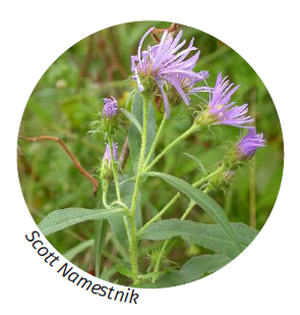
Northwestern sticky aster (Canadanthus modestus)
Northwestern sticky aster has only been found once in Wisconsin, in the far northwest corner of the state near the city of Superior. Since it was discovered in 2008, no follow-up reports have been submitted to the DNR, so its status is currently unknown. As a boreal species that barely extends into Wisconsin, it is obviously vulnerable to warming temperatures. Already at the edge of its climate envelope, it could be pushed over the limit as it gets hotter. There is one priority population in Wisconsin.
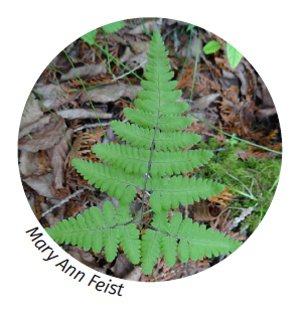
Limestone oak fern (Gymnocarpium robertianum)
Limestone oak fern has been found scattered around the state, but since the mid-1980s it has only been seen in the northeast, perhaps indicating a range contraction due to the warming climate. The more recent observations have been made in cedar swamps, a wetland threatened first by disruptions to constant input of mineral-rich groundwater and second by warming temperatures, pushing its characteristic species northward. There are five priority populations in Wisconsin.
